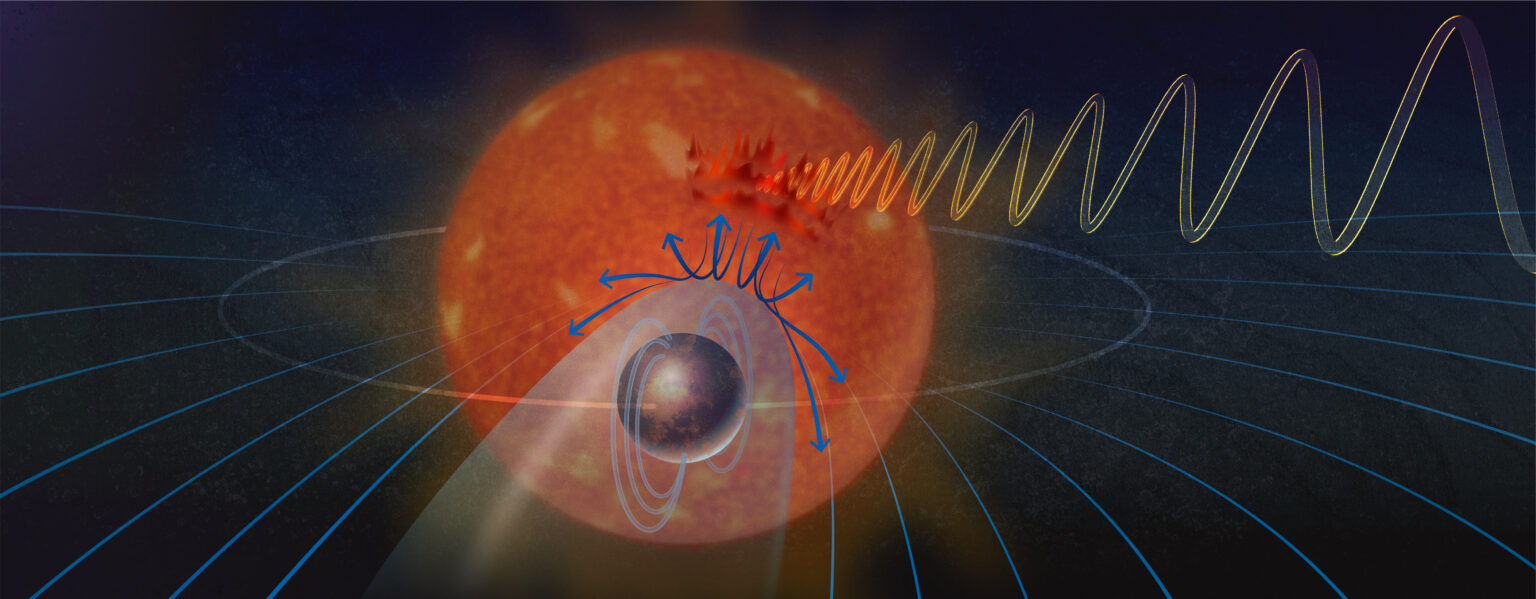
Magnetic field is an important characteristic of a planet. And when it comes to Earth, the field is generated by the motion of molten iron in its core.
It not only protects the atmosphere on Earth from cosmic radiations but it also deflects the charged particles spewed off by the sun. In absence of magnetic field, planet’s atmosphere would erode. Thus, making it less habitable.
YZ Ceti b
Researchers have now identified a planet emanating similar magnetic field. The planet, YZ Ceti b, is situated in another solar system.
YZ Ceti is a red dwarf star located about 12 light-years away from Earth in the constellation Cetus.
Fast Radio Bursts (FRBs), have been detected from YZ Ceti b, a rocky planet.
Until now, these repeated radio signals a.k.a. FRBs were associated with much more distant sources, for instance, other galaxies. This is for the first time such radio bursts are being detected from a relatively nearby star.
Sebastian Pineda and Jackie Villadsen used the Karl G. Jansky Very Large Array (VLA) to observe the repeating radio signal.
Parameters for habitability
There are two key factors that determine the habitability of an exoplanet:
- if it has rocky topography, and
- whether it has a magnetic field
Current research fulfils both the conditions hence it looks a promising option for further exploration.

Magnetic field interacts with stellar wind
As mentioned before, the survival of any planet depends on the presence of strong magnetic field.
To determine magnetic field on any exoplanet is not that simple. It can be inferred by observing the interaction between the planet and its host star.
For instance, planet’s magnetic field when interact with stellar wind apparently, create a bow shock. The curved propagating disturbance can produce the detectable radio emissions.
“If the planet has a magnetic field and it plows through enough star stuff, it will cause the star to emit bright radio waves.”
Takeaway
With the observed data, YZ Ceti b seem to power the flux densities of the radio detections.
The coherent radio bursts have always been a fascinating subject within the field of astronomy. And who knows the consistent signals might give rise to some interesting data or star systems.
I strong believe that YZ Ceti is a candidate, which astronomers will study and target for long-term monitoring.



